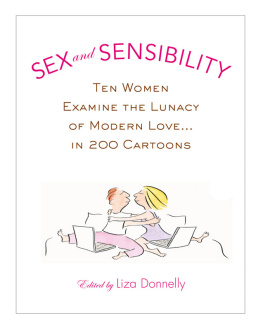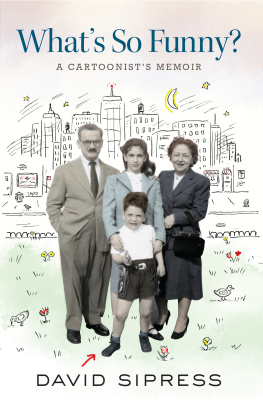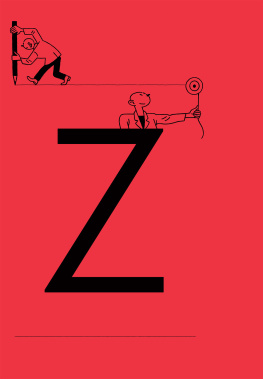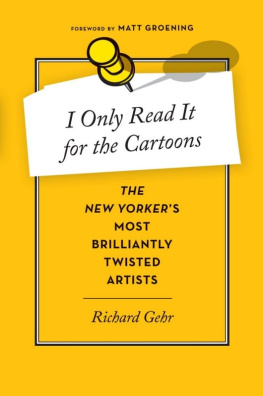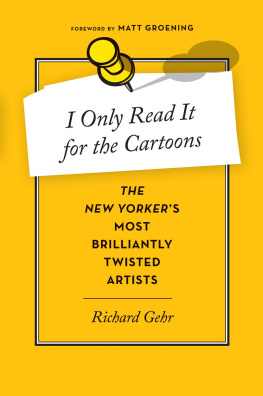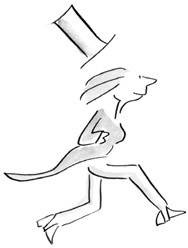Liza Donnelly - Very Funny Ladies: The New Yorkers Women Cartoonists
Here you can read online Liza Donnelly - Very Funny Ladies: The New Yorkers Women Cartoonists full text of the book (entire story) in english for free. Download pdf and epub, get meaning, cover and reviews about this ebook. year: 2022, publisher: Prometheus, genre: Non-fiction. Description of the work, (preface) as well as reviews are available. Best literature library LitArk.com created for fans of good reading and offers a wide selection of genres:
Romance novel
Science fiction
Adventure
Detective
Science
History
Home and family
Prose
Art
Politics
Computer
Non-fiction
Religion
Business
Children
Humor
Choose a favorite category and find really read worthwhile books. Enjoy immersion in the world of imagination, feel the emotions of the characters or learn something new for yourself, make an fascinating discovery.

- Book:Very Funny Ladies: The New Yorkers Women Cartoonists
- Author:
- Publisher:Prometheus
- Genre:
- Year:2022
- Rating:4 / 5
- Favourites:Add to favourites
- Your mark:
Very Funny Ladies: The New Yorkers Women Cartoonists: summary, description and annotation
We offer to read an annotation, description, summary or preface (depends on what the author of the book "Very Funny Ladies: The New Yorkers Women Cartoonists" wrote himself). If you haven't found the necessary information about the book — write in the comments, we will try to find it.
Its no secret that most New Yorker readers flip through the magazine to look at the cartoons before they ever lay eyes on a word of the text. But what isnt generally known is that over the decades a growing cadre of women artists have contributed to the witty, memorable cartoons that readers look forward to each week. Now Liza Donnelly, herself a renowned cartoonist with the New Yorker for more than twenty years, has written this wonderful, in-depth celebration of women cartoonists who have graced the pages of the famous magazine from the Roaring Twenties to the present day.
An anthology of funny, poignant, and entertaining cartoons, biographical sketches, and social history all in one, VeryFunny Ladies offers a unique slant on 20th-century and early 21st-century America through the humorous perspectives of the talented women who have captured in pictures and captions many of the key social issues of their time. As someone who understands firsthand the cartoonists art, Donnelly is in a position to offer distinctive insights on the creative process, the relationships between artists and editors, what it means to be a female cartoonist, and the personalities of the other New Yorker women cartoonists, whom she has known over the years.
Very Funny Ladies reveals never-before-published material from The New Yorker archives, including correspondence from Harold Ross, Katharine White, and many others. This book is history of the women of the past who drew cartoons and a celebration of the recent explosion of new talent from cartoonists who are women. Donnelly interviewed many of the living female cartoonists and some of their male counterparts: Roz Chast, Liana Finck, Amy Hwang, Victoria Roberts, Sam Gross, Lee Lorenz, Michael Maslin, Frank Modell, Bob Weber, as well as editors and writers such as David Remnick, Roger Angell, Lee Lorenz, Harriet Walden (legendary editor Harold Rosss secretary). The New Yorker Senior Editor David Remnick and Cartoon Editor Emma Allen contributed an insightful foreword.
Combining a wealth of information with an engaging and charming narrative, plus more than seventy cartoons, along with photographs and self-portraits of the cartoonists, Very Funny Ladies beautifully portrays the art and contributions of the brilliant female cartoonists in Americas greatest magazine.
Liza Donnelly: author's other books
Who wrote Very Funny Ladies: The New Yorkers Women Cartoonists? Find out the surname, the name of the author of the book and a list of all author's works by series.

